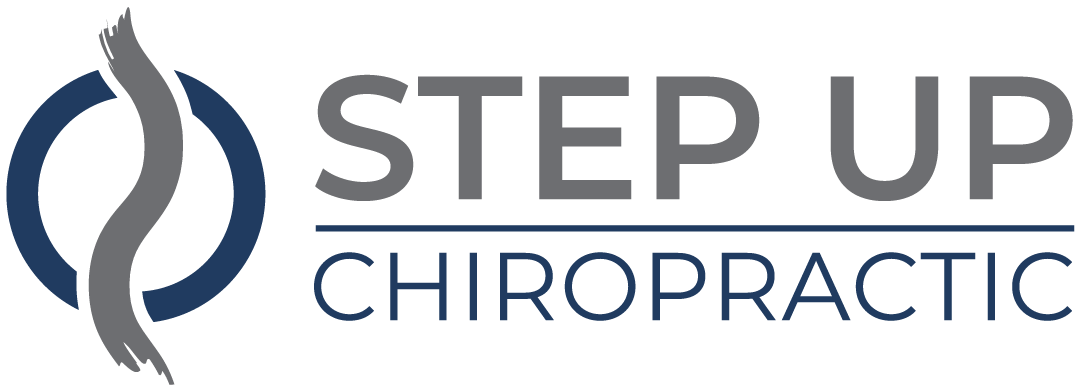You've probably experienced it—an unexpected twinge or a persistent ache that disrupts your day. Back pain isn't just an annoyance; it's a complex issue that can stem from various causes, often leaving you wondering what's really going on. By recognizing the symptoms and understanding their origins, you can start to piece together this puzzle. But what if the solutions you've tried aren't working? Let's explore the factors at play and uncover how you can take control of your back health moving forward.
Understanding Back Pain
Back pain can sneak up on you, turning everyday activities into a struggle. You might bend to pick something up or sit for too long, and suddenly, a sharp twinge reminds you that your back isn't as resilient as it used to be. Understanding back pain is vital for managing it effectively. It often manifests as a dull ache, sharp pain, or even a burning sensation, and it can vary in intensity. You might feel it in your lower back, upper back, or even radiating down your legs.
It's essential to recognize that back pain can impact more than just your physical capabilities; it can affect your mood and overall quality of life. You may find yourself avoiding activities you once enjoyed, leading to frustration and isolation. Knowing this, you need to pay attention to how your back feels during different tasks.
The spine is a complex structure made up of vertebrae, discs, muscles, and ligaments, all working together to support your body. When one part isn't functioning correctly, it can lead to pain.
You don't have to be an expert to understand that maintaining good posture, staying active, and strengthening your core can make a significant difference.
Common Causes of Back Pain
You mightn't realize it, but poor posture can greatly contribute to your back pain.
Additionally, everyday activities can lead to muscle strains that leave you feeling uncomfortable.
Understanding these common causes is the first step in finding effective solutions.
Poor Posture Effects
Slouching in a chair or hunching over a screen can lead to considerable back pain, often stemming from poor posture habits. When you sit or stand incorrectly, your spine can become misaligned, putting undue stress on muscles and ligaments. Over time, this misalignment can lead to chronic discomfort and even more serious conditions.
You mightn't realize it, but your daily habits play an essential role in your back health. If you spend hours at your desk without taking breaks, you're likely to find yourself leaning forward, which strains your lower back.
Even something as simple as how you hold your phone can contribute; tilting your head down for extended periods creates tension in your neck and back.
To combat these issues, make a conscious effort to maintain proper posture. Adjust your workstation so your screen is at eye level, and take regular breaks to stand and stretch.
Your back will thank you for it. By becoming more aware of your posture throughout the day, you can notably reduce your risk of developing back pain and improve your overall well-being.
Muscle Strain Sources
Muscle strain can often be a hidden culprit behind back pain, arising from a variety of everyday activities. You mightn't realize it, but simple tasks like lifting a heavy box, bending awkwardly, or even sitting for long periods can lead to muscle strain.
When you engage in these activities without proper technique or adequate preparation, your back muscles can become overstretched or torn, resulting in discomfort.
You may also experience strain from sudden movements, like twisting while carrying something. This can catch your muscles off guard, leading to acute pain.
Additionally, repetitive motions—whether at work or during exercise—can wear down muscles over time, causing chronic strain.
Don't forget that your fitness level plays a role too. If you're not regularly active, your muscles may not be conditioned to handle physical stress, increasing the likelihood of injury.
To combat this, focus on strengthening your core muscles, which support your back, and always use proper lifting techniques.
Symptoms to Watch For
When dealing with back pain, recognizing the symptoms to observe for can be essential to effective management. You might experience a variety of sensations, and understanding what they mean can help you take appropriate action.
First, pay attention to the type of pain you feel. Is it sharp, dull, or throbbing? Sharp pain could indicate a more serious issue, while dull aches are often related to muscle strain. You should also note if the pain radiates into your legs or arms; this could mean nerve involvement and may require prompt attention.
Next, watch for any changes in mobility. If you find it difficult to bend, twist, or lift, it might be a sign that something's wrong. Stiffness, particularly after periods of inactivity, is another symptom to reflect on. If you experience a loss of range in motion, it's important to address it early.
Take note of any accompanying symptoms like numbness, tingling, or weakness in your limbs. These sensations can indicate nerve compression or injury and shouldn't be ignored.
Finally, monitor any changes in bowel or bladder function, as these can signal serious underlying conditions.
Diagnosis and Assessment
When you're dealing with back pain, understanding the diagnosis and assessment process is essential.
Your healthcare provider will review your medical history, conduct a physical examination, and may recommend diagnostic imaging to pinpoint the issue.
This thorough approach helps guarantee you get the most effective treatment for your specific situation.
Medical History Evaluation
A thorough medical history evaluation is essential for accurately diagnosing back pain. When you visit your healthcare provider, they'll ask about your symptoms, lifestyle, and previous medical conditions. Be prepared to discuss when your pain started, its intensity, and any activities that make it better or worse. Your answers will help pinpoint potential causes.
Your healthcare provider will also want to know about any past injuries or surgeries related to your back. If you've experienced similar pain before, mention that too. They'll ask about your daily routine, including your job, exercise habits, and sleep patterns. These details can reveal whether your back pain stems from physical strain, poor posture, or underlying medical issues.
Additionally, be honest about any medications you're taking and your family history of back problems or other health conditions. This information can help your provider understand your risk factors.
Physical Examination Techniques
Often, healthcare providers use specific physical examination techniques to assess back pain effectively. When you visit a provider, they'll likely start by observing your posture and gait. They'll ask you to stand, walk, and sit to evaluate how your movements might affect your discomfort.
Next, they'll perform a series of tests. You might be asked to bend forward, backward, and side to side to assess your range of motion. They'll also gently palpate your spine and surrounding muscles to identify areas of tenderness, tightness, or swelling. This hands-on approach helps pinpoint the source of your pain.
Expect functional tests, too. Your provider may assess your strength and reflexes by asking you to perform specific movements or checking your leg and arm reflexes. These tests help identify any nerve involvement and rule out serious conditions.
Throughout the examination, open communication is key. Be honest about your pain levels and any limitations you experience during movements. This information is essential for your provider to accurately diagnose your condition and develop an effective treatment plan tailored to your needs.
Diagnostic Imaging Options
To accurately diagnose the underlying causes of your back pain, healthcare providers often turn to diagnostic imaging options. These tools help visualize the structures in your back, allowing for a more precise diagnosis. The most common imaging methods include X-rays, MRI, and CT scans.
X-rays are typically the first step. They can reveal fractures, alignment issues, or degenerative changes in your spine. However, they won't show soft tissues like discs or muscles, which can also contribute to your pain.
That's where MRI comes in. MRIs provide detailed images of soft tissues, helping identify herniated discs, spinal stenosis, or tumors. While MRIs are more thorough, they take longer and may require more preparation.
CT scans offer a middle ground, combining the detail of MRIs with the speed of X-rays. They're especially useful if your doctor suspects complex issues or needs to assess bone structures better.
Choosing the right imaging option depends on your symptoms and the initial findings from your physical examination. Your healthcare provider will guide you through this process, ensuring you get the most appropriate imaging to understand your back pain fully.
Treatment Options Available
When it comes to managing back pain, understanding the treatment options available can empower you to make informed choices. Each person's experience with back pain is unique, so exploring various approaches can help you find what works best for you.
Here are three common treatment options to reflect on:
1. Physical Therapy: Engaging in physical therapy can be essential for recovery. A trained therapist will guide you through exercises that strengthen your back, improve flexibility, and reduce pain.
They'll also teach you proper body mechanics to prevent future issues.
2. Medications: Over-the-counter pain relievers, such as ibuprofen or acetaminophen, can provide temporary relief. If your pain is more severe, your doctor may prescribe stronger medications or muscle relaxants.
Always consult with a healthcare professional for guidance on medications and their potential side effects.
3. Alternative Therapies: Exploring alternative treatments like acupuncture, chiropractic care, or massage therapy can be beneficial. Many people find that these modalities help relieve pain and promote relaxation.
Just be sure to choose licensed practitioners who've experience treating back pain.
Lifestyle Changes for Prevention
Making lifestyle changes can play a significant role in preventing back pain. First, focus on your posture. Whether you're sitting at a desk or lifting heavy objects, maintaining proper alignment can drastically reduce strain on your back.
Invest in ergonomic furniture and practice good posture habits to keep your spine healthy.
Next, incorporate regular physical activity into your routine. Strengthening your core muscles helps support your back, reducing the risk of injury. Aim for a mix of cardiovascular exercises, strength training, and flexibility workouts like yoga or Pilates.
Even simple activities like walking can make a difference.
Pay attention to your weight, too. Carrying excess weight puts additional strain on your spine and can exacerbate back pain. A balanced diet, rich in fruits, vegetables, lean proteins, and whole grains, can help you maintain a healthy weight.
Staying hydrated is also essential, as it supports overall body function.
Don't overlook the importance of sleep. Make sure you have a comfortable mattress and pillow that support your spine's natural curve. Aim for 7-9 hours of quality sleep each night to give your body the chance to recover.
Lastly, manage stress effectively. Stress can lead to muscle tension, which can trigger or worsen back pain. Techniques such as meditation, deep breathing, or engaging in hobbies you enjoy can help keep stress in check.
When to Seek Professional Help
Recognizing the signs that indicate a need for professional help is essential for managing back pain effectively. Many people ignore their symptoms or hope they'll resolve on their own, but waiting can lead to worsening issues.
If you experience any of the following signs, it's vital to consult a healthcare professional:
- Persistent Pain: If your back pain lasts more than a few weeks or worsens over time, it's time to seek help. Chronic pain can indicate underlying conditions that require treatment.
- Numbness or Tingling: Experiencing numbness, tingling, or weakness in your legs or arms may signal nerve compression or damage. These symptoms can escalate if left untreated, so don't delay.
- Loss of Bladder or Bowel Control: This is a serious symptom that requires immediate medical attention. It could indicate a condition called cauda equina syndrome, which is a medical emergency.
Understanding when to seek help can make a significant difference in your recovery. Early intervention often leads to better outcomes, preventing further complications.
Don't hesitate to reach out to a healthcare provider if you're unsure; they can guide you on the best course of action. Remember, taking your back pain seriously is the first step toward finding relief and improving your quality of life.
Conclusion
To sum up, understanding back pain is key to managing it effectively. By recognizing common causes and symptoms, you can take proactive steps to improve your situation. Don't underestimate the power of lifestyle changes and proper treatment options; they can make a real difference. If your pain persists, don't hesitate to seek professional help. With the right approach, you can crack the mystery of back pain and get back to enjoying life fully.




